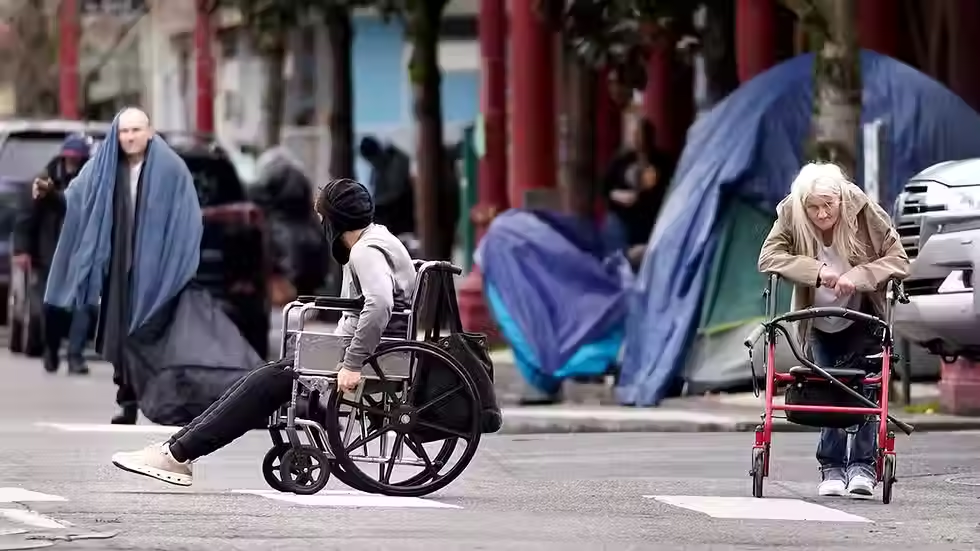The (De)Valuing of Care Labor
- ytena0
- Aug 24
- 3 min read

“The Eight (8) hour workday, brought to you by the Labor movement…”
The Fair Labor Standards Act, a crowning victory for the Labor Movement, guarantees most workers that they will not work more than 40 hours a week; weekly work exceeding 40 hours for a single employer receives overtime payment, subject to a few exceptions.
One notable exception is “domestic service” or “providing companionship services for individuals.” (29 U.S.C. 213(a)(15)). This type of work includes positions such as: live-in nanny, babysitter, and in-home workers, often called personal care attendants or home health aides.
All jobs performed in large measure by women, and in the case of in-home workers for disabled people, Black and brown women.
According to the 2023 BLS, nearly a million people work as “home health aides”. The average hourly wage for home health aides is $15.44/hour, about $1.50/hour less than health aides working in facilities. The average annual wages for personal care aides places this occupation at the fifth lowest paid job in the country, workers have less access to benefits like paid sick leave, employer-sponsored health insurance, or retirement benefits. And these sobering statistics only capture the economic hardships associated with in-home care work.
A 2023 dissertation study summed up the experience of Black women providing long term care in disabled and elderly people’s homes “Overall, the undesirable aspects of work articulated fall into three categories: 1) being overworked; 2) feeling disrespected; and 3) experiencing racially motivated bias and discrimination.” (p. 58)
Even federal eight-hour workday limitations and overtime payment requirements celebrated as a Labor Day victory have been denied to in-home personal care workers.
The 2007 Supreme Court applied an exception in the Fair Labors Standards Act (FLSA) to workers providing in-home services to deny workers overtime payment for work beyond 40 hours a week. This exception was applied even when the worker was employed by a home health agency that was sending the worker to different clients’ homes each day or week.
The Court invited Congress to change the language in the FLSA or offer legislative clarity on whether in-home workers were or were not covered by FLSA wage and hour protections. Congress did not take the issue up and left the Court’s interpretation standing.
In 2013, the federal Department of Labor, under the Obama Administration, and against the strenuous objection of disability advocates, issued regulations that applied the FLSA to in-home workers, requiring overtime payment for weekly work over 40 hours. A lawsuit filed by disability advocates failed to result in the courts overturning the regulations, so for a decade, these basic labor protections have been available to in-home workers that disabled people rely on to remain living in their own homes and communities.
On July 25, 2025, the current Department of Labor Wage and Hour Division issued Field Assistance Bulletin No. 2025-4 immediately suspending any wage and labor enforcement based on the 2013 regulatory changes, and re-opened the 2013 regulations for public comment. Lifting a page from disability advocates’ arguments opposing the 2013 regulations, the Trump Department of Labor’s rationales for revoking the 2013 guidance include a desire to reduce regulatory burdens, expand access to home care services, and honor the employment relationship between home care workers and the individuals they help.
To date no major disability organizations have issued action alerts on the public comment opportunity.
While providing comments on the proposed rule change is one thing that people concerned about the care workforce can do, this Labor Day the Lois Curtis Center encourages folks to take time to consider the value of care work to the people doing the work. Overworked and underpaid is not sustainable for any workers. But the devaluing of this work and the people who do this work goes beyond the low wages, lack of benefits, and workdays of over 8 hours. This Labor Day we invite people to critically consider how our communities treat care work and the people doing this work and re-vision how we can uplift, sustain, and meaningfully value care work models for the well-being of us all.



Comments